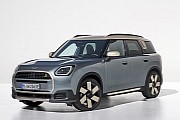history
One of the most easily recognizable cars in the world, the Mini has managed to attain cult status despite the fact that it's as common as they come. The idea and the design of the Mini came from the British Motor Corporation originally, but the small car has undergone several changes when it comes to the producer.
Back in the 60s it started a whole new craze because, despite it being very small, it actually had enough space inside for passengers and luggage. This was thanks to the innovative design of the front wheel drive and engine. Initially, the cars were sold either under the Austin or the Morris badge. It wasn't until 1969 that Mini became a marque of its own.
The Minis were also quite efficient from the performance point of view, having a unibody that further reduced weight and granted more space inside the car. Its design became so known that by 1990 Rover Group, descendants of BMC, decided to trademark the car.
The first Mini was produced in August 1959, the Mark I also known as the Austin 850 and the Morris 850 in international markets, while in the UK they were known as Austin Seven or the Morris Mini-Minor. Until the end of the first generation in 1967, the cars received several upgrades including better suspension and automatic transmission.
The second generation of cars was produced between 1967 and 1970. They had a redesigned front grill and a larger rear window. It was these cars that were used to make the hit film “The Italian Job” in 1969.
An interesting version of the Mini can in 1961 when John Cooper, owner of the Cooper Car Company saw the potential of the small cars and decided to create the Mini Cooper, a more powerful version of the basic Austin Mini Cooper and Morris Mini Cooper. It had a bigger engine at 997cc, 55hp, twin SU carburetors, a closer ration gearbox and disc brakes.
The good reviews for this version led to the development of an even sportier version, the Mini cooper S in 1963. Cooper also built cars specifically for the racing circuit. These were particularly successful in the Monte Carlo Rally which they won in 1964, 1965 and 1967 (in 1966 they were disqualified despite finishing on the top three positions).
The third generation of Minis, the Mark III, came between 1970-2000. These had bigger bodies, concealed door hinges and winding windows (previous models had sliding ones). Despite all their best efforts, the manufacturers simply couldn't bring that new air look to the Mini, now in serious need of a make-over, a fact which severely affected overall sales.
The only way that the Mini survived during the 80s and 90s was to come up with “special editions”. This was in part the doing of BMW which bought the remnants of BMC under the Rover badge. These models were seen as cool fashion icons, a touch of retro in an otherwise modern market. But BMW wasn't finished with the Mini logo which it still held, in 2001, the technologically advanced New Mini was launched, which was otherwise unrelated to the old car. In 2007 the number of car produced reached 1 million.
expand









